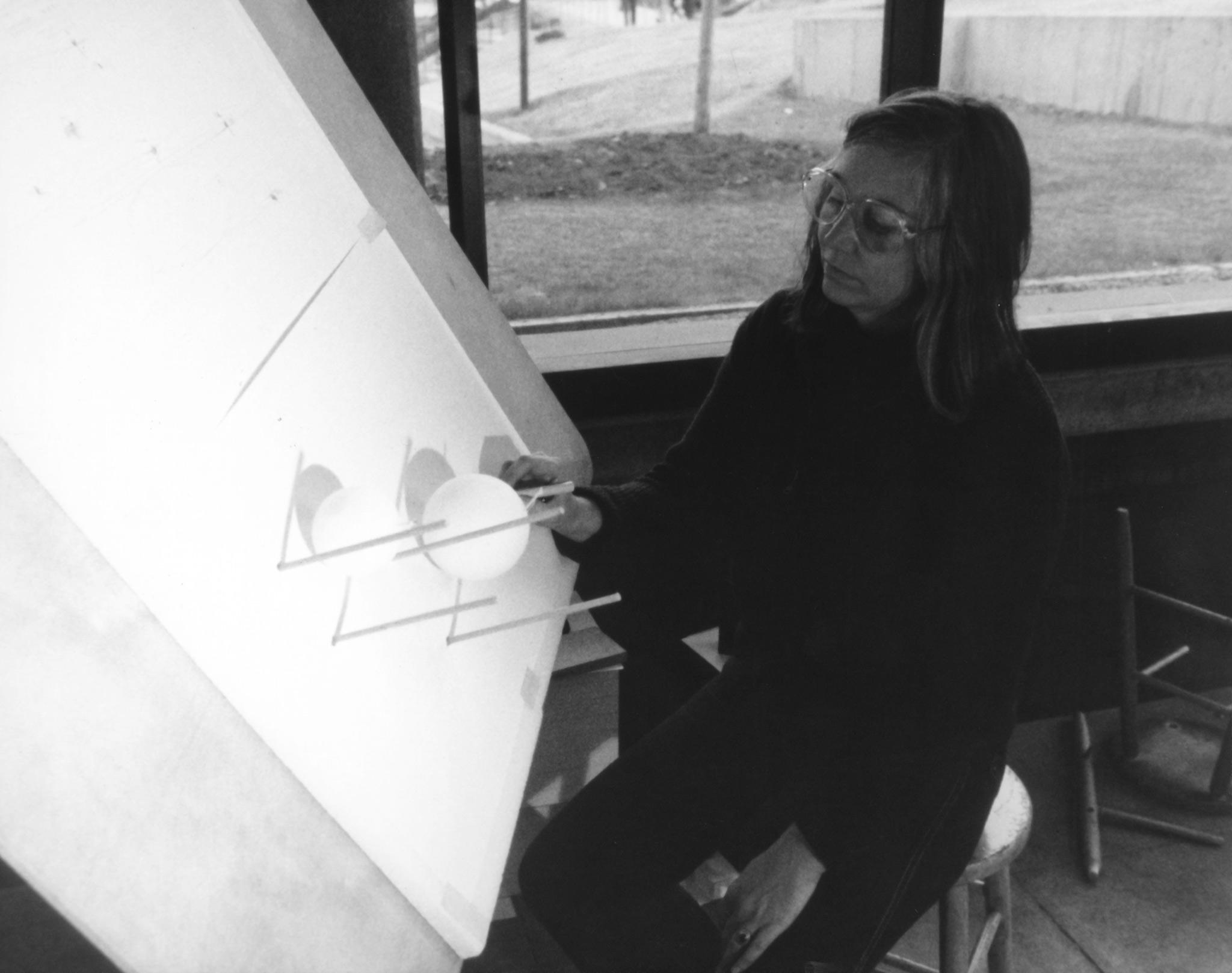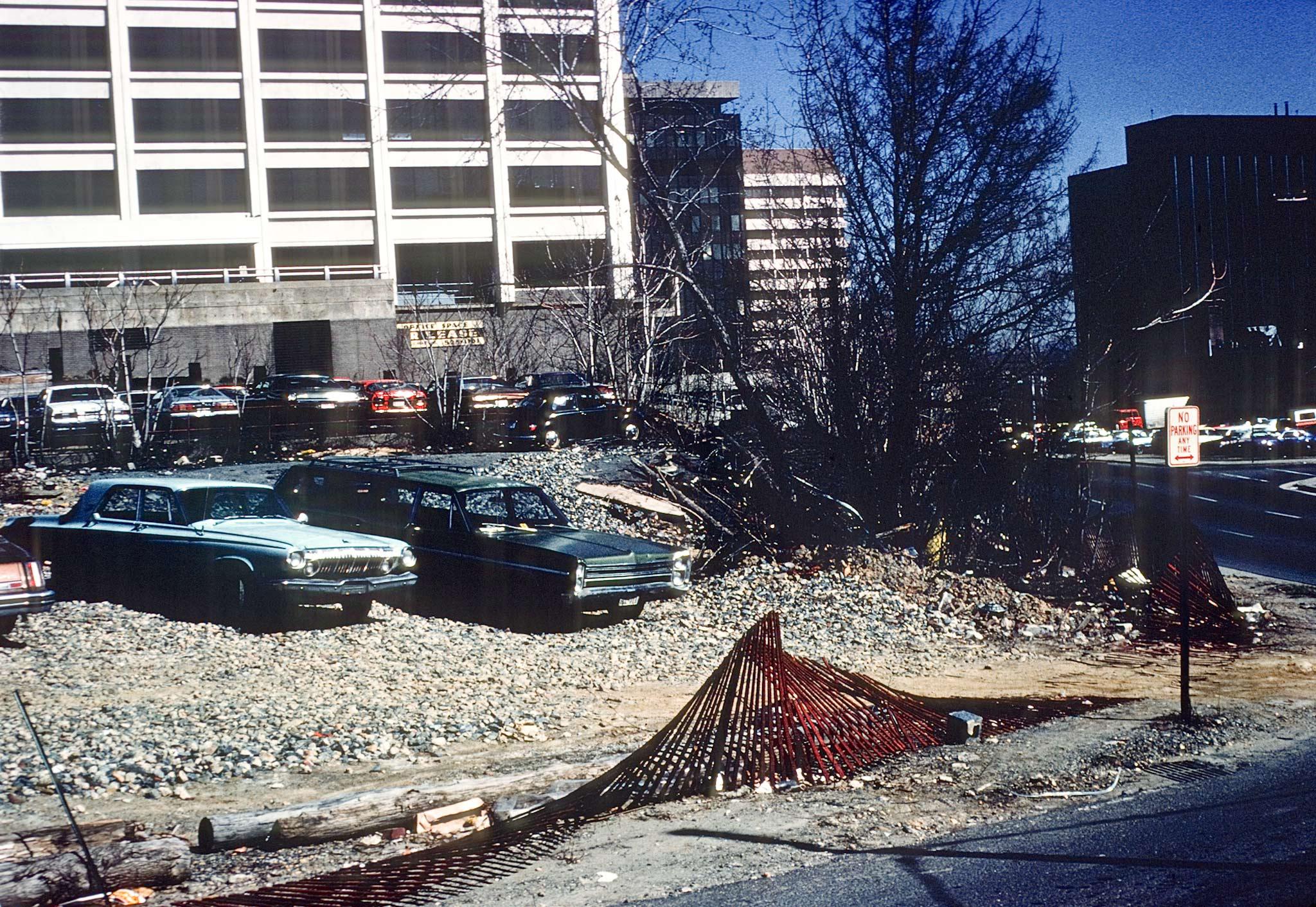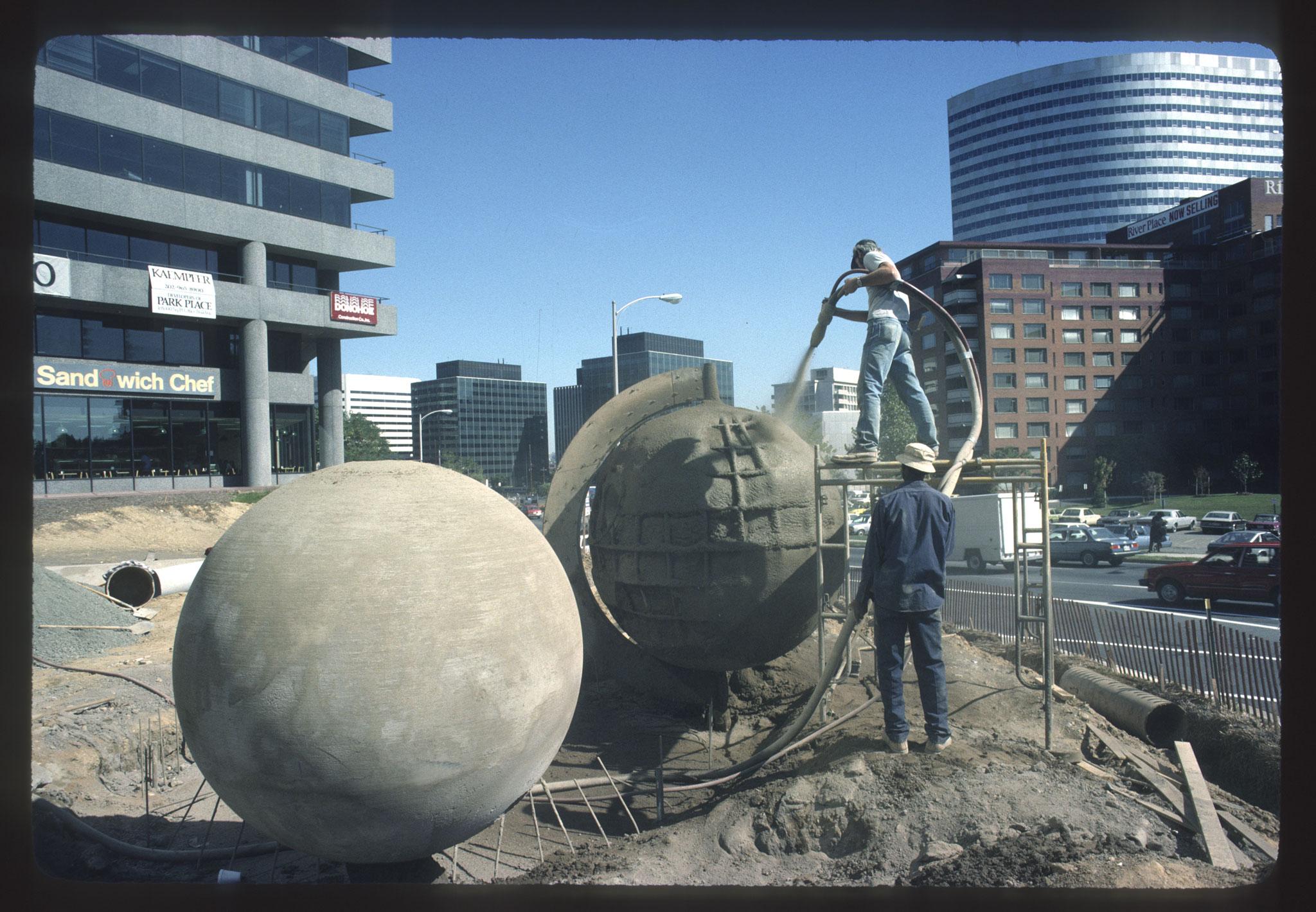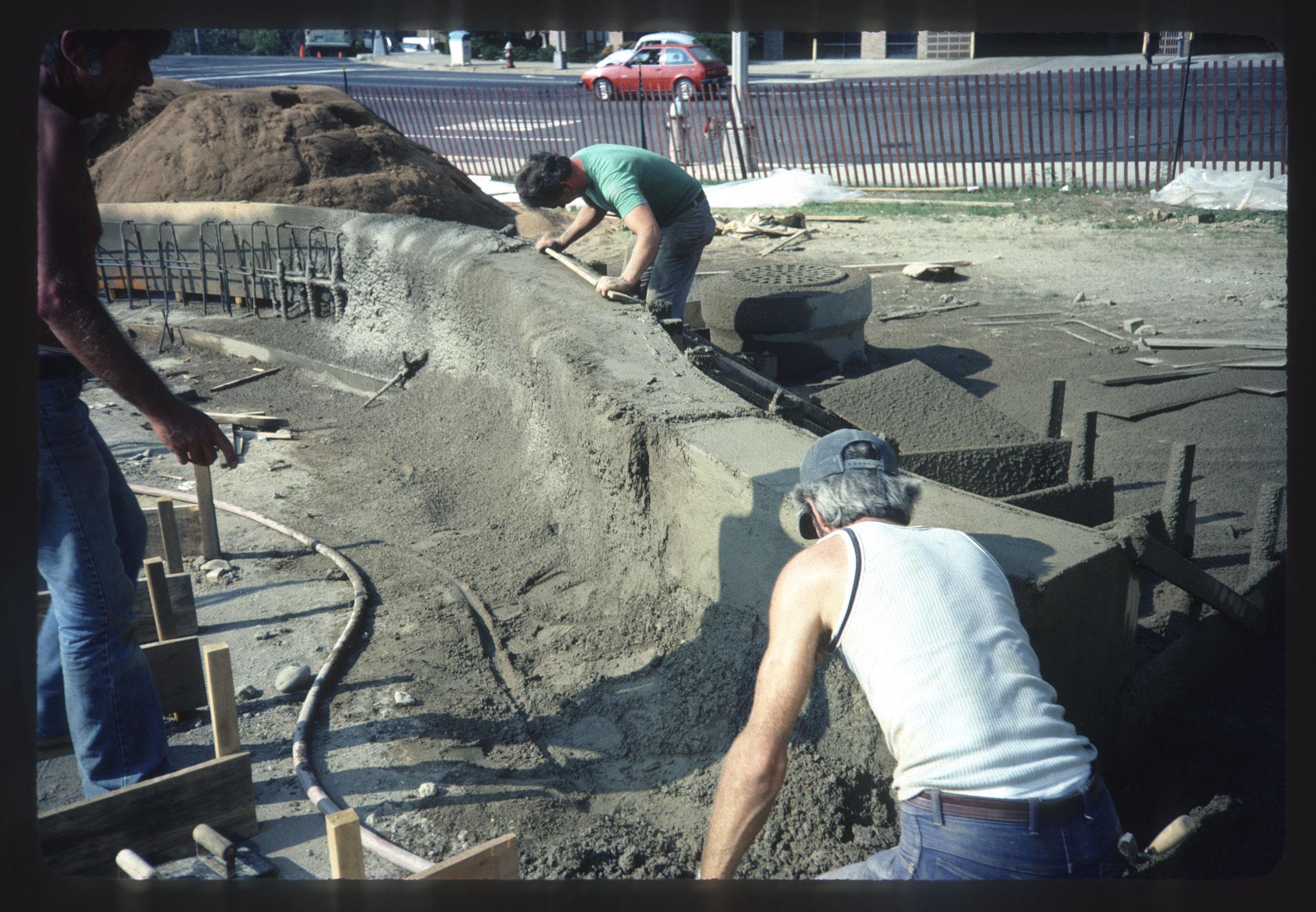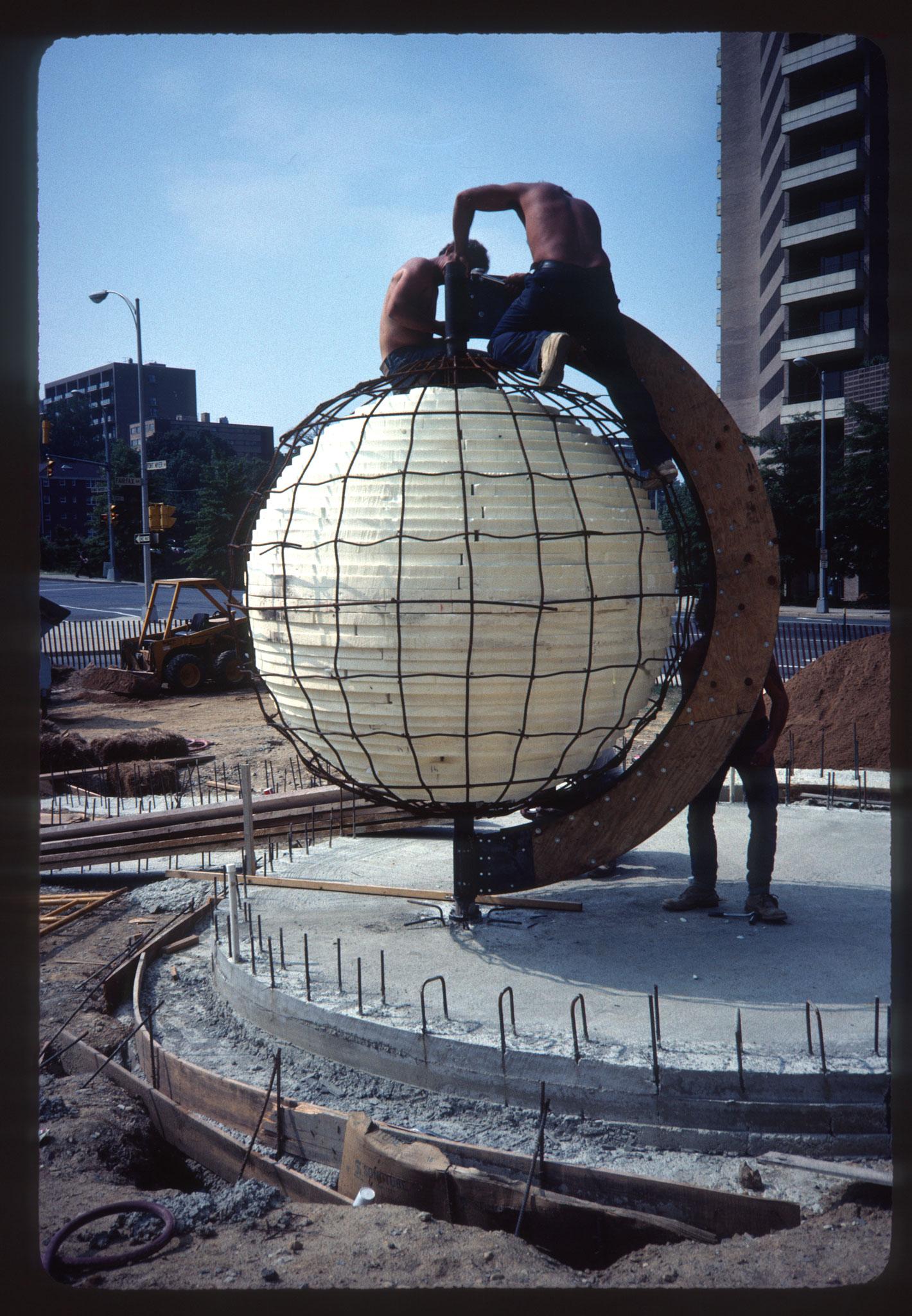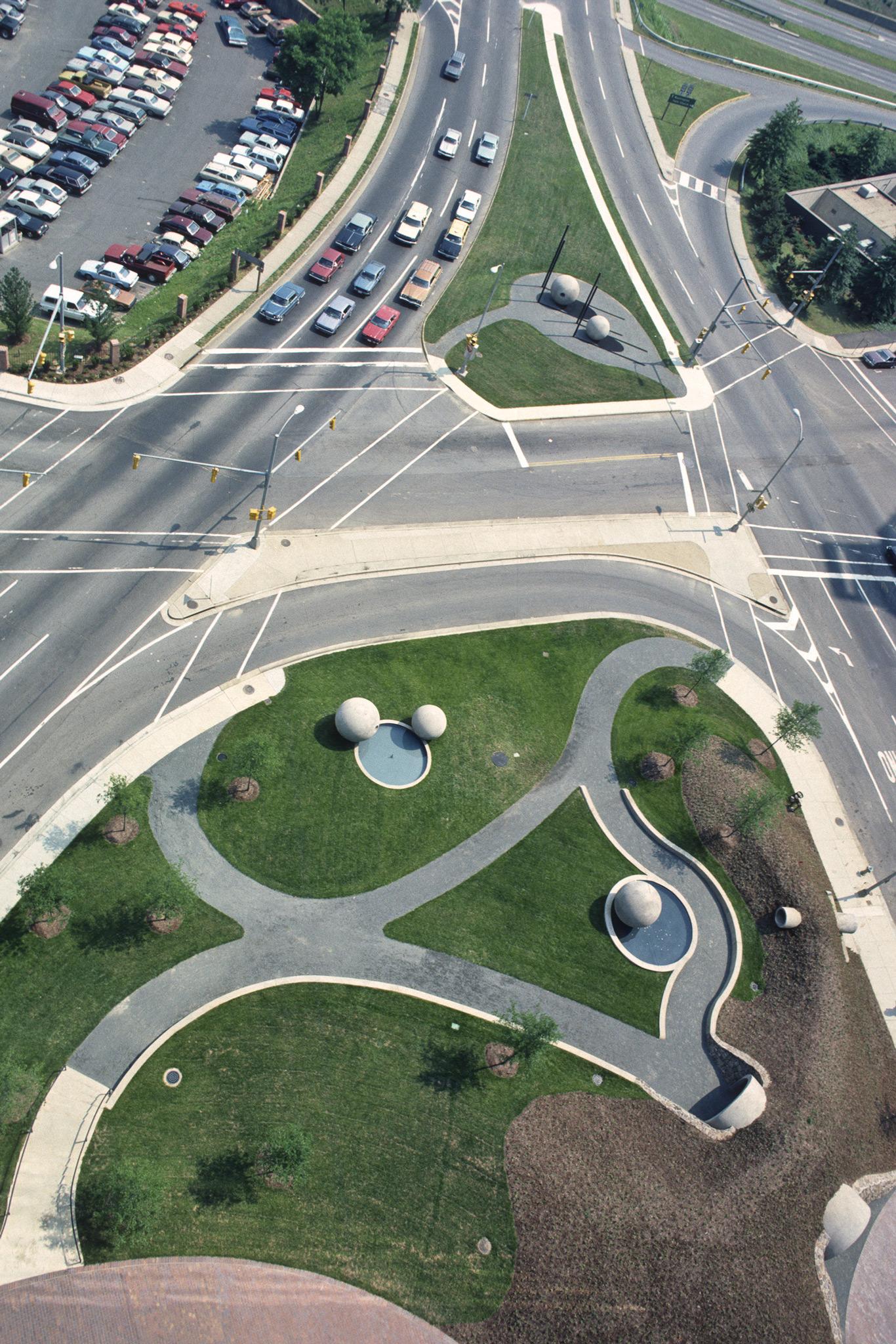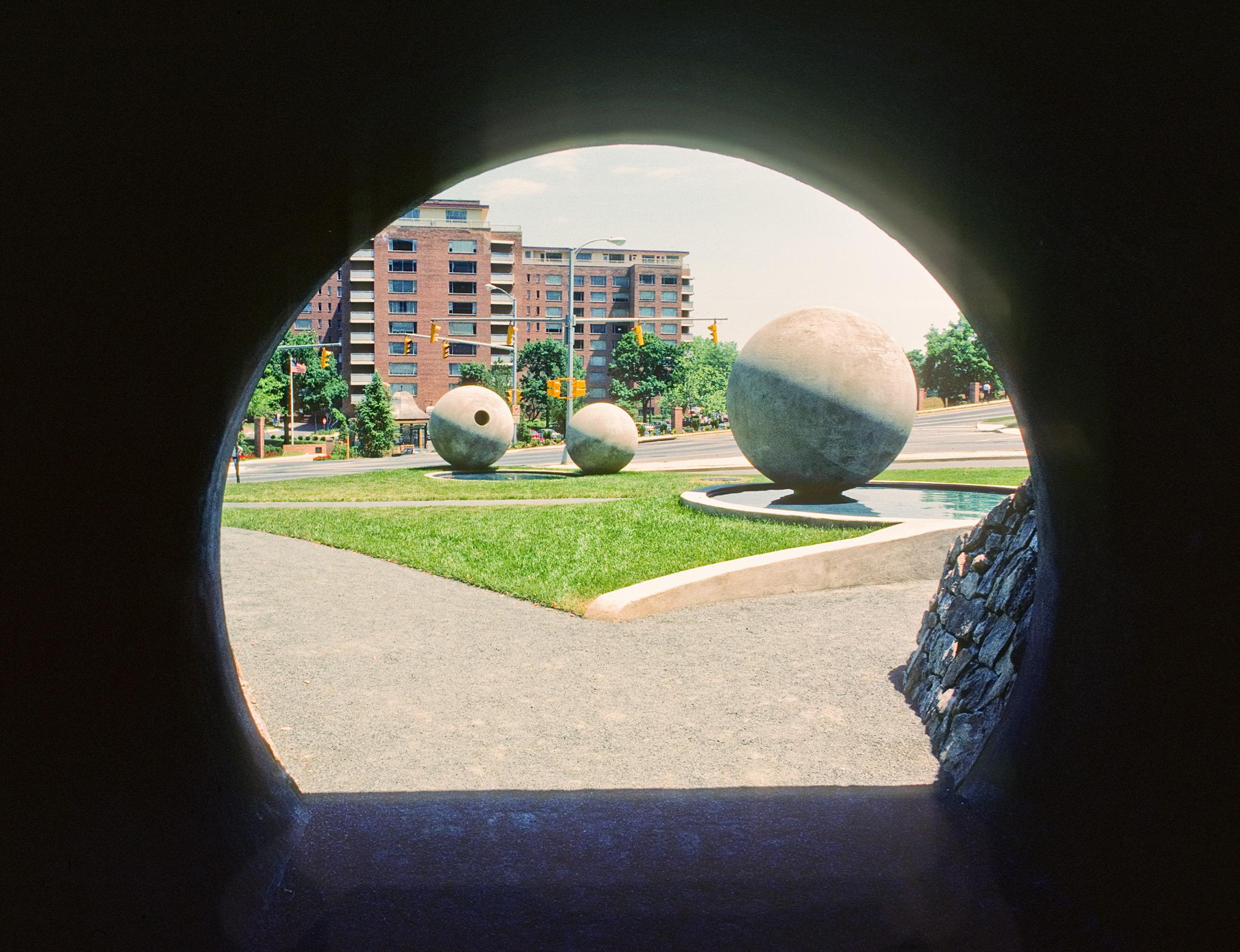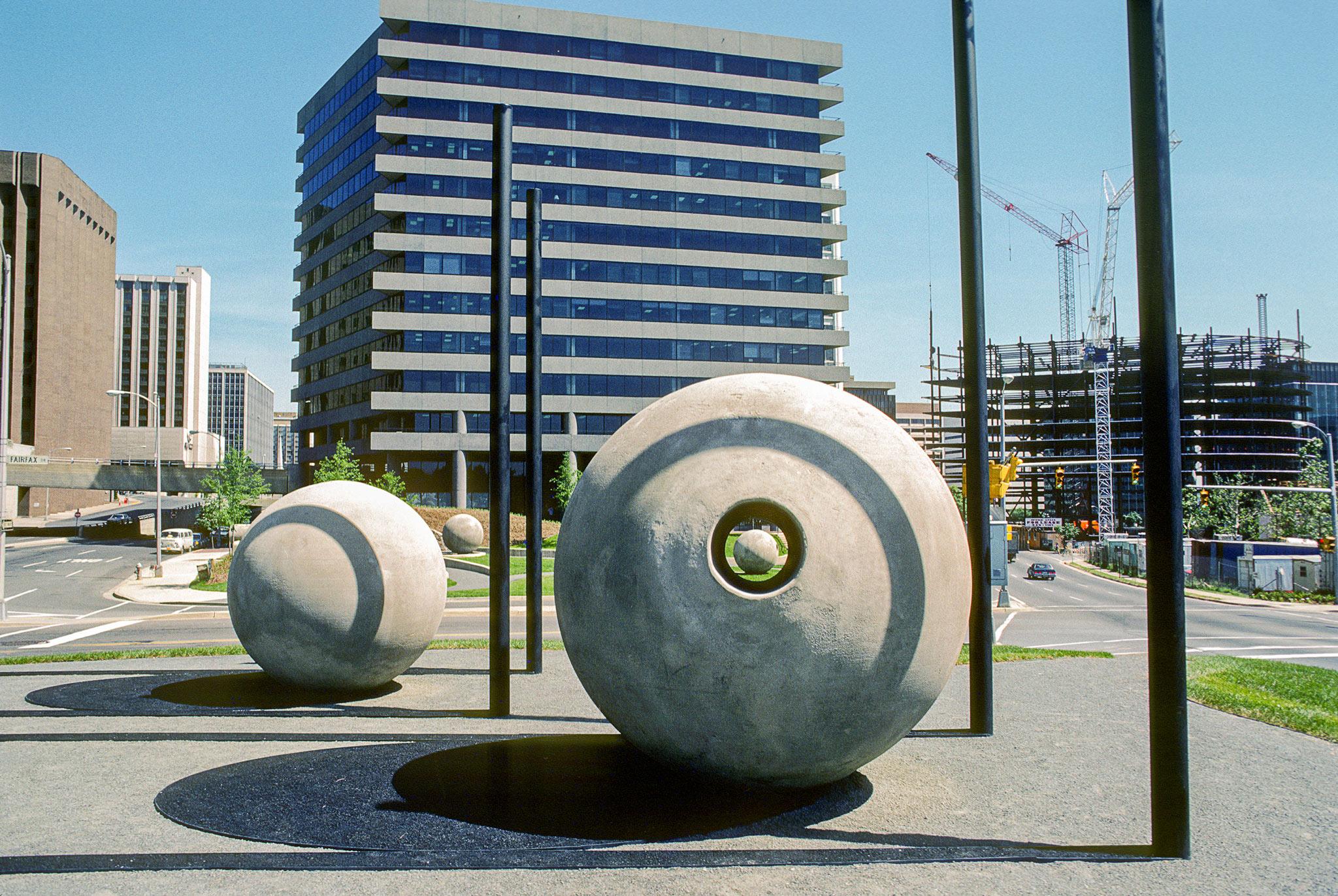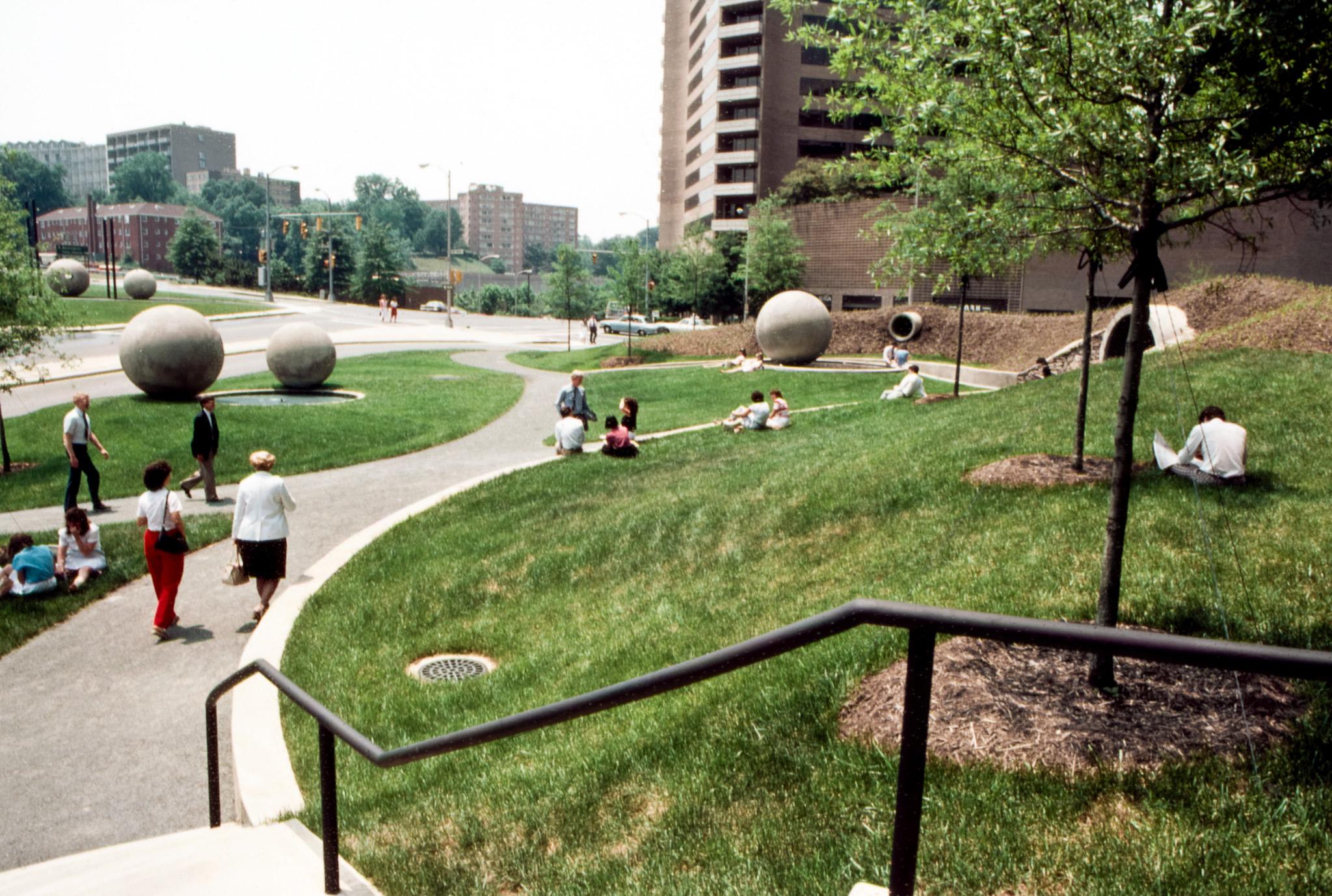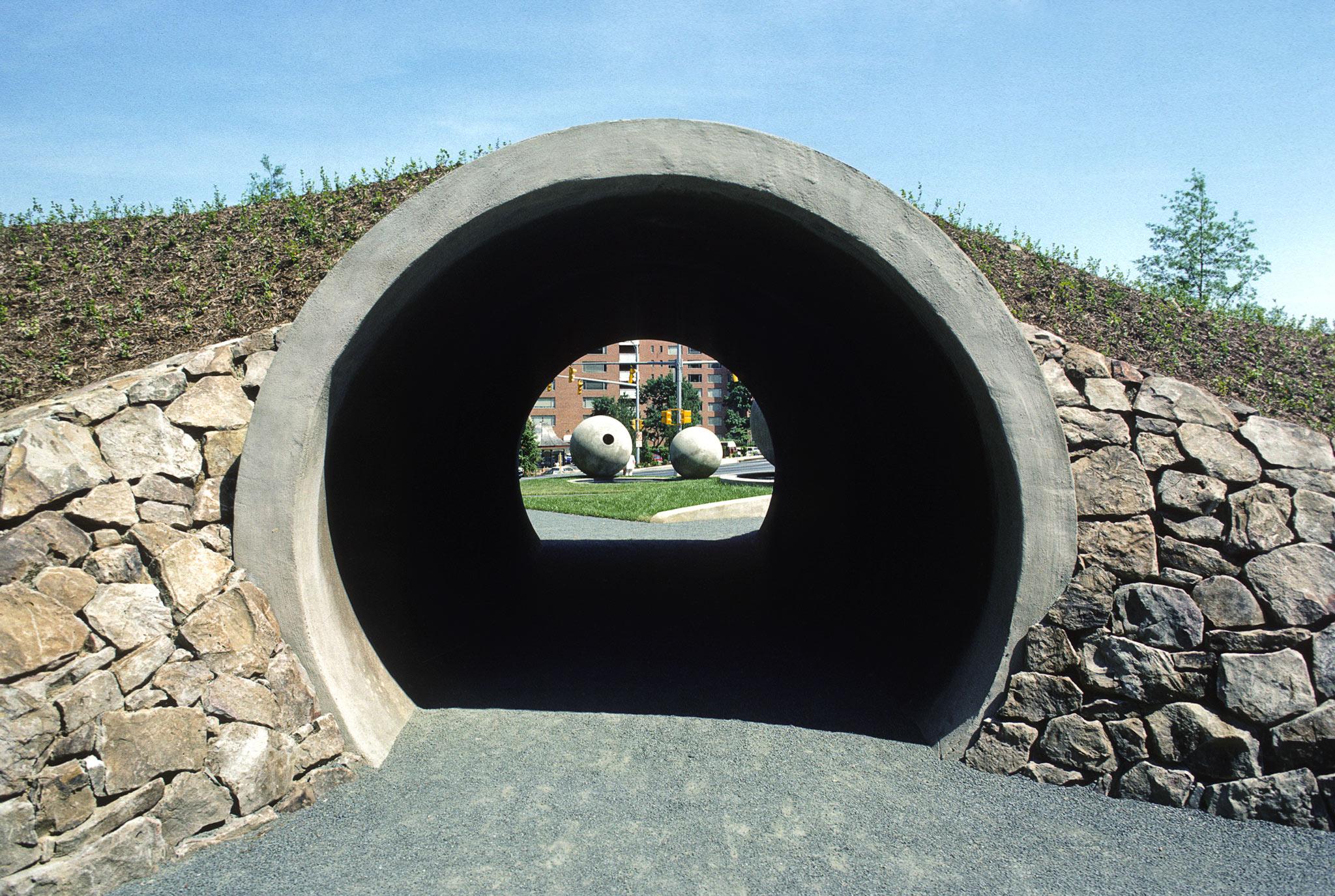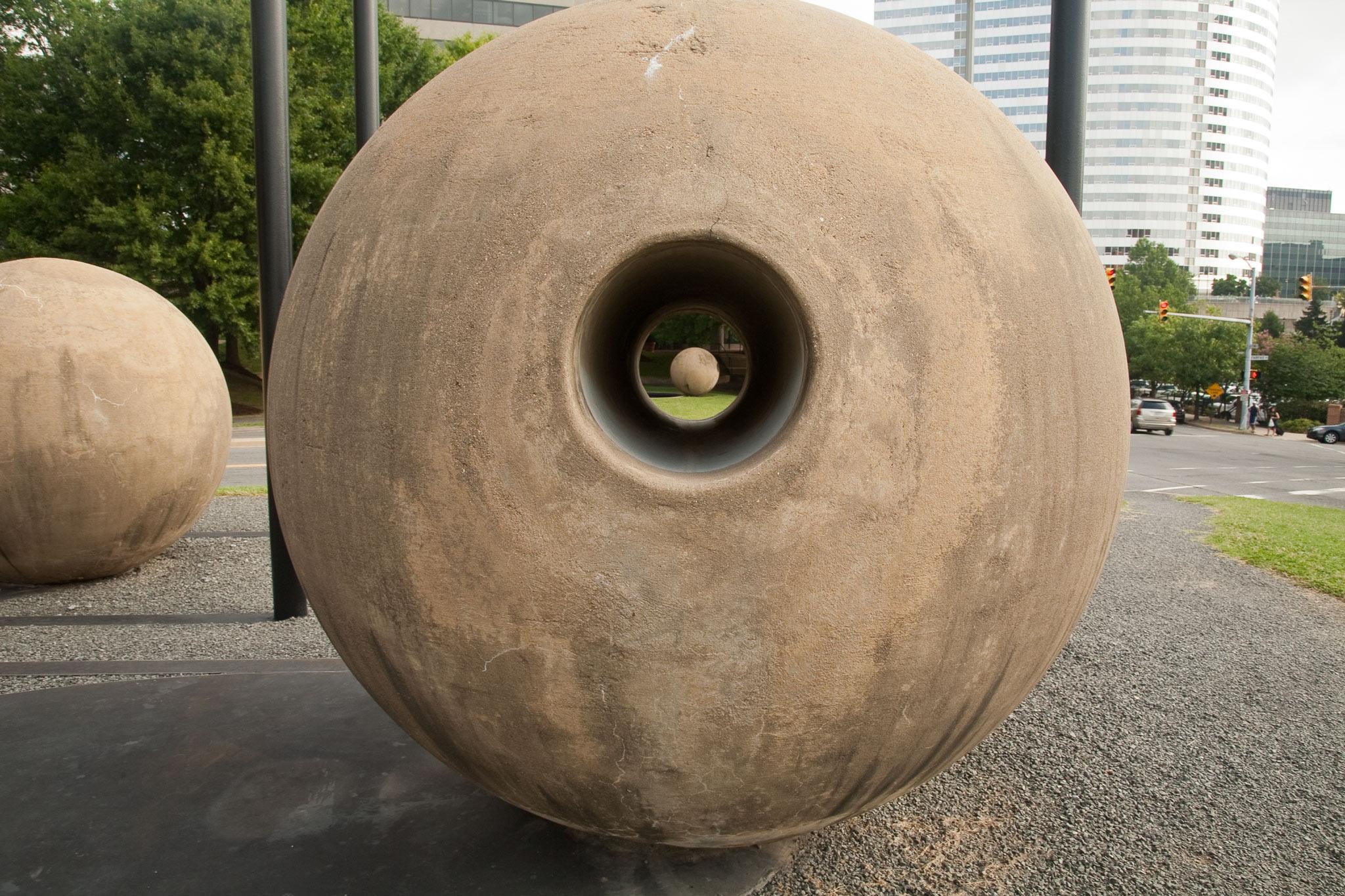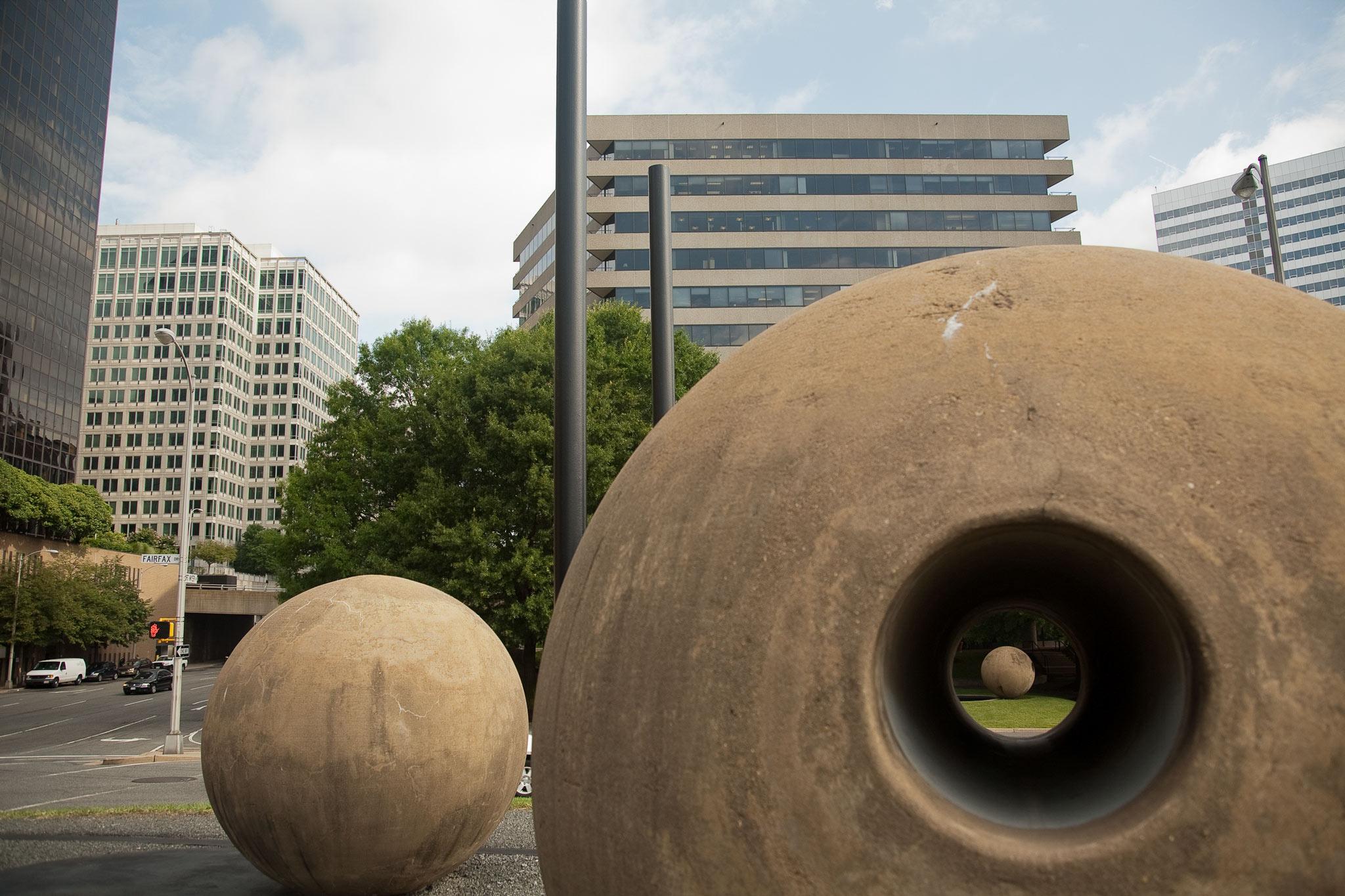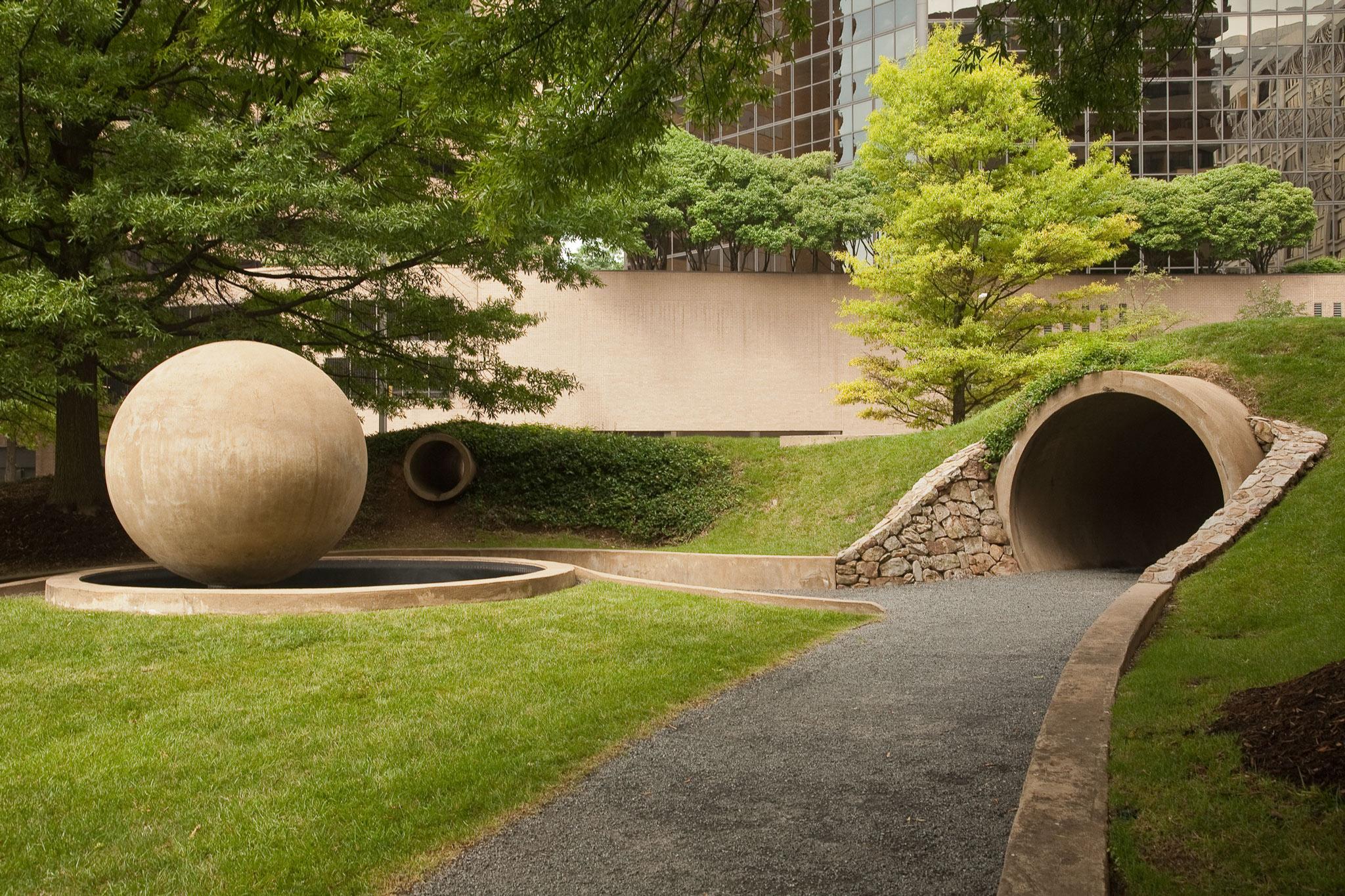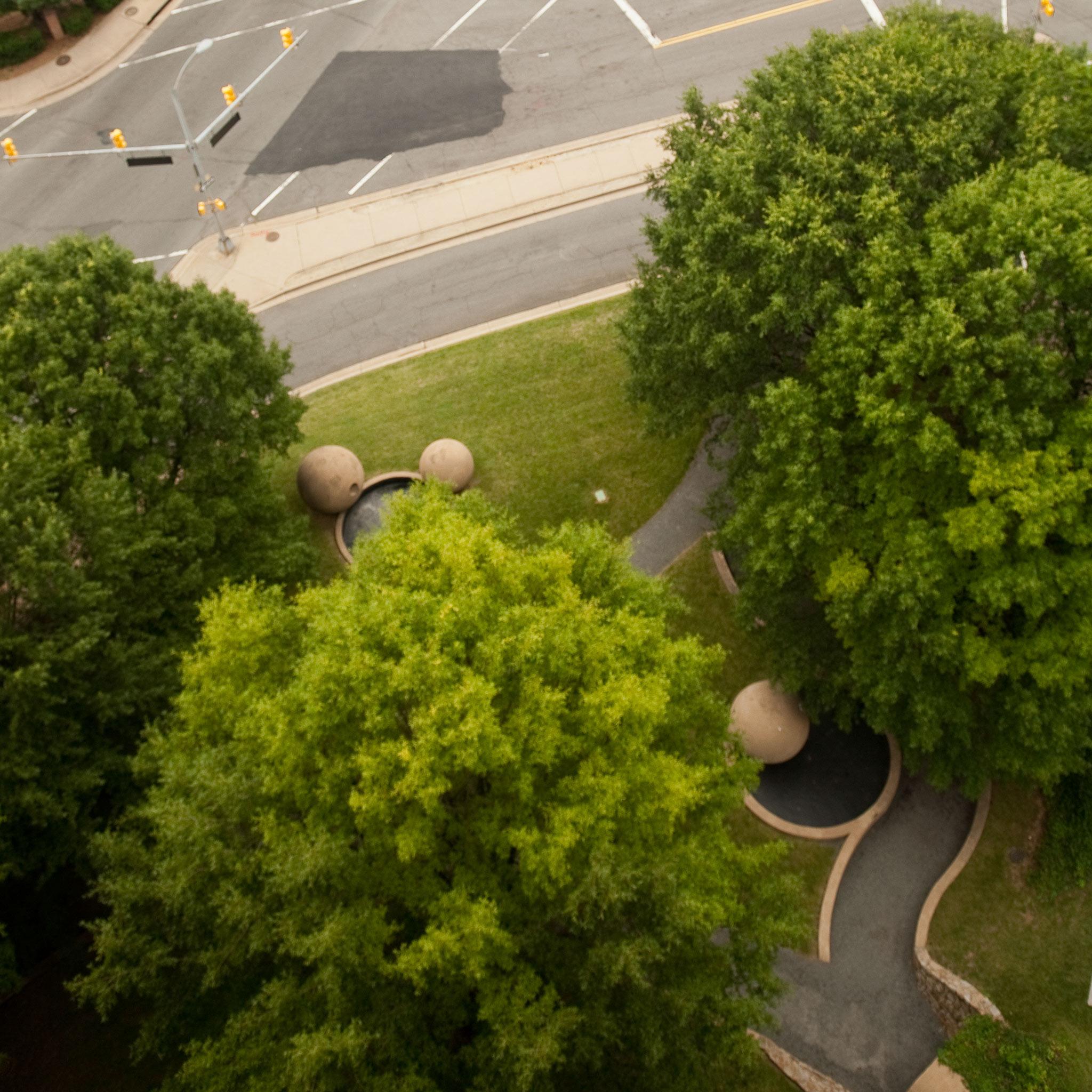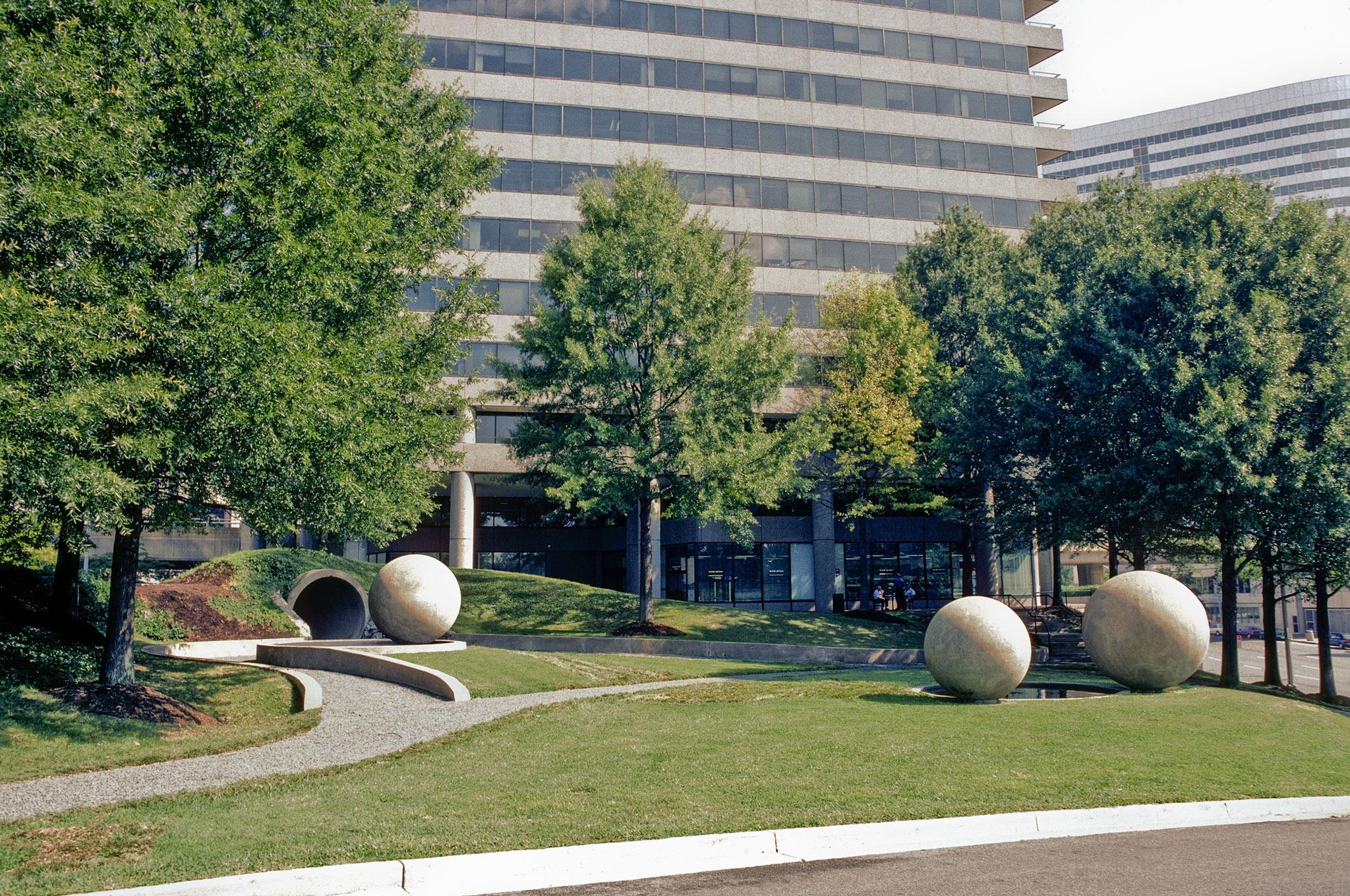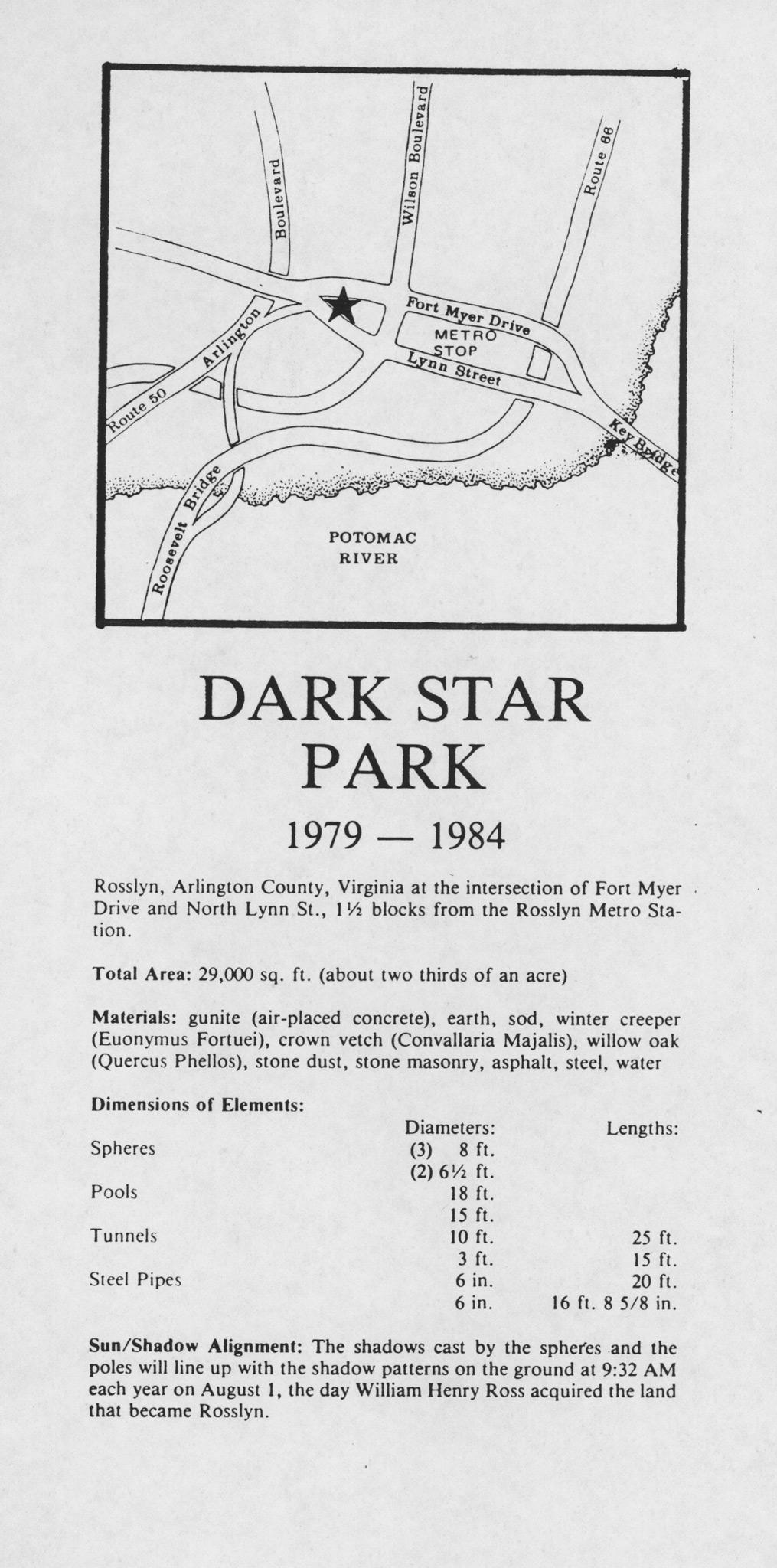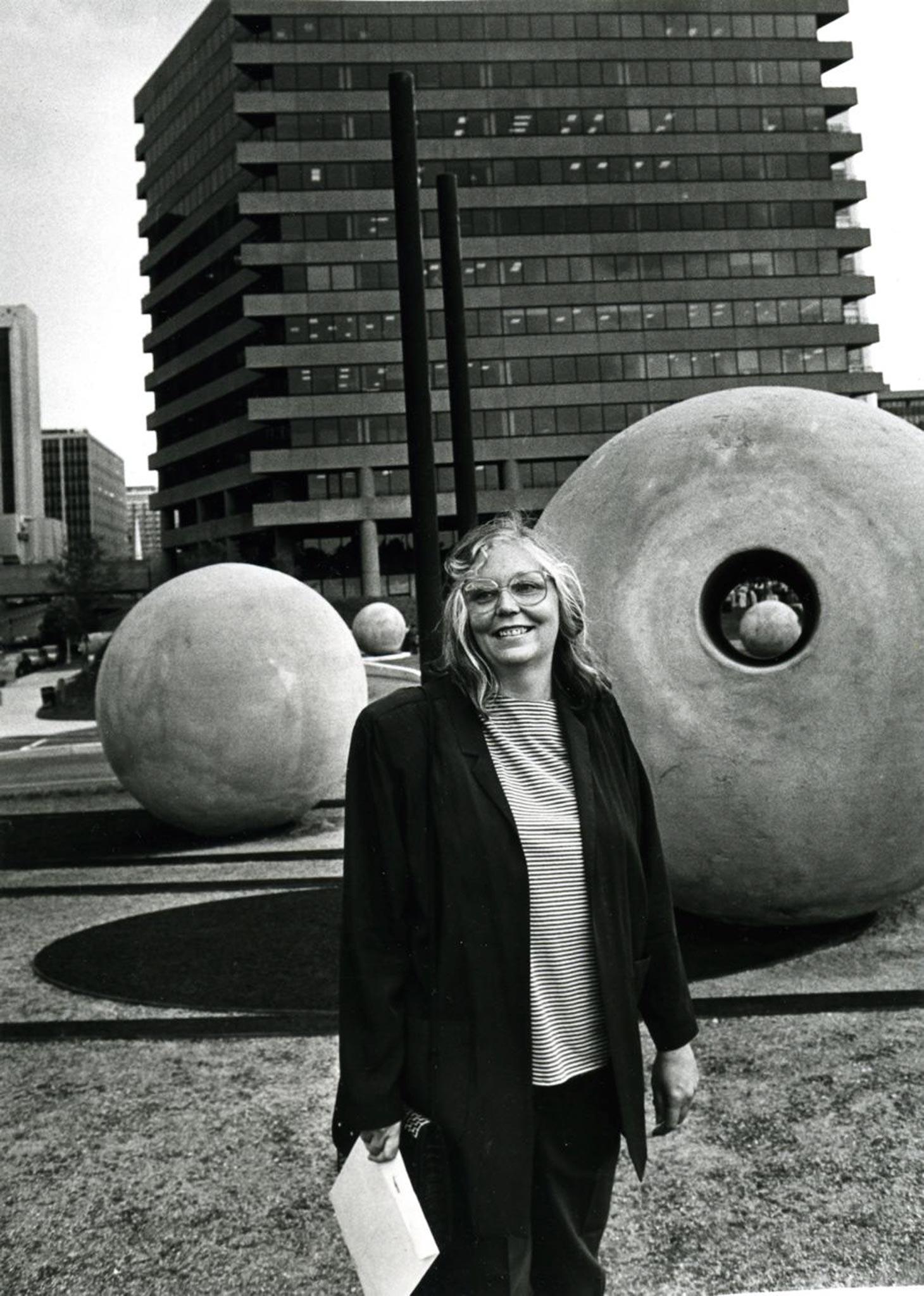Dark Star Park
More than five years ago, in the spring of 1979, I was informed by Thomas Parker, then supervisor of the Arlington County Planning Section, that I had been selected to make a sculpture in a small park being planned in Rosslyn, Virginia.
Soon after, I visited the proposed area—a blighted urban site with the buried remains of a gas station and a warehouse, surrounded by broken asphalt, giant weeds, collapsed fencing, fragments of glass, rusty steel, and decaying wood. Since the site was relatively small, my immediate thought was to use all of it to create a park that would be a work of art in itself. Fortunately, both Arlington County and the National Endowment for the Arts were open to this new approach to making art, and I was designated the park designer as well as the sculptor.
A few months after the contract was signed, plans to construct a building on the lot adjacent to the park were announced. Since the design of the building would obviously have an impact on the park, I was put on the committee to approve the architectural design. The first building plan presented would have cut off the view of the park from Rosslyn’s main intersection and would have made the park into a front yard, since the building’s entrance opened on to it. The second proposal, the Park Place building there now, resolved both these problems to everyone’s satisfaction.
Once the building design was determined, I was able to begin considering my ideas for the park. One of my strongest desires was to see the park flow into the plaza of the building and surround some of the columns. I contacted J. W. Kaempfer Jr., the developer of the Park Place building, and told him of my idea. Since the concept was an unusual one, there was some initial hesitation, but in 1980, at a meeting to discuss the issue, which included Kaempfer, Parker, the architect Alexander Jeffries, Peter Walker (the landscape architect for the building), and me, the idea was accepted.
Simultaneously, I was seeking to extend the area of the park to include the traffic island, which is state land. Arlington County was successful in obtaining permission from the State of Virginia, and the two pieces of land are now visually interconnected, parts of one park.
Park construction was postponed until the building could be built, allowing the park site to be used as a staging area for construction. In return, J. W. Kaempfer Jr. graciously increased the park budget by $50,000.
By the end of July 1983, the park was under way. The gunite work was completed by mid-December 1983 by Paddock Pools, and from March to May 1984 the park was landscaped. Throughout all of the construction I was present on a daily basis, becoming a temporary resident of Arlington in the process.
With Dark Star Park I am continuing, among other things, my concerns with the architectural form of the tunnel and its various symbolic ramifications—birth, death, transition, etc., and with illusions of ordinary perception, especially as perception is altered by curvilinear forms. As the viewer walks in the park or drives by it, spheres of different sizes may appear to be the same size or one sphere may eclipse another in passing or a sphere may be seen through a round hole in another sphere, through a tunnel, or reflected in a pool. Two spheres are seen at the same time through the large tunnel and through the hole in the sphere on the traffic island—in this instance, as the viewer steps back, one sphere slowly fills the circular void. When spheres are only partially seen through the holes, tunnels, and pools, crescents and ellipses of space, sphere, shadow, and reflection visually emerge.
The shadow patterns on the ground indicate that the poles and spheres are actually tangent to each other, whereas perceptually they look as if they are either closer together or wider apart than the diameters of the spheres. The shadows cast by the poles and spheres line up with the steel-edged asphalt shadow patterns on the ground at approximately 9:32 a.m. on August 1 each year—the day in 1860 when William Henry Ross acquired the land that became Rosslyn—merging historical time with the cyclical time of the sun.
The making of Dark Star Park has been long and arduous. I became involved in areas of activity in which I had had limited experience, such as architectural planning, landscape design, contractors’ specifications, engineering, guniting, drainage, sidewalk construction, bureaucratic procedures, etc. Five years is a long time to sustain an art idea and work toward its realization. But during that time possibilities for other works have been evolving out of the intermediate stages, and my concern with the value of making art that is also functional and necessary in society has been reinforced. I hope the precedents established here will continue in future art projects throughout the world.
Holt, Nancy. “Dark Star Park.” In Nancy Holt: Sightlines, edited by Alena J. Williams, University of California Press, 2011, pg 118-119. Originally published in a slightly different form in the brochure Dark Star Park: Rosslyn, Arlington County, Virginia: Nancy Holt, produced by Arlington County, Virginia, in 1984 on the occasion of the park’s dedication.
